The Australia and South Pacific islands Tourism Market is estimated to be valued at USD 183.8 billion in 2025 and is projected to reach USD 361.5 billion by 2035, registering a compound annual growth rate (CAGR) of 7.0% over the forecast period.
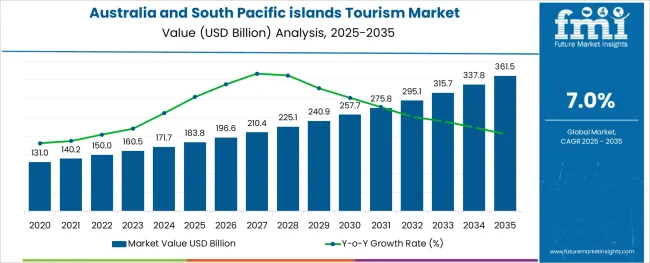
The Australia and South Pacific islands tourism market is experiencing robust momentum, supported by increasing domestic travel, growing international appeal of indigenous heritage, and widespread adoption of digital platforms for trip planning. Post-pandemic recovery efforts, coupled with targeted regional marketing campaigns, have revived interest in exploring nature-based, cultural, and island experiences. Government incentives, infrastructure modernization, and eco-tourism investments are playing a critical role in attracting diverse tourist demographics.
As airlines resume international connectivity and travel restrictions ease, traveler confidence is being reinforced through flexible booking options and sustainability-driven packages. Destinations across the South Pacific are witnessing renewed demand for cultural immersion and offbeat travel routes, while Australia continues to benefit from its strong domestic tourism base.
Looking ahead, integrated tourism ecosystems powered by smart technology and regional collaboration are expected to drive sustained growth across booking channels and experience types.
The market is segmented by Tourism Type, Booking Channel, and Tourist Type and region. By Tourism Type, the market is divided into Cultural & Heritage Tourism, Medical Tourism, Eco/Sustainable Tourism, Sports Tourism, and Wellness Tourism. In terms of Booking Channel, the market is classified into Online Booking, Phone Booking, and In Person Booking. Based on Tourist Type, the market is segmented into Domestic and International. Regionally, the market is classified into North America, Latin America, Western Europe, Eastern Europe, Balkan & Baltic Countries, Russia & Belarus, Central Asia, East Asia, South Asia & Pacific, and the Middle East & Africa.
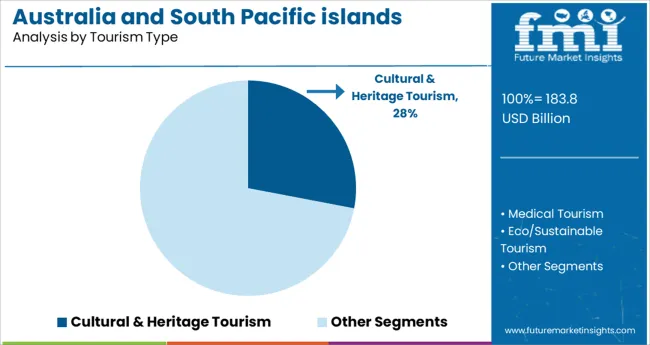
Cultural and heritage tourism is projected to account for 28.0% of total market share in 2025, making it a key tourism type within the region. Growth in this segment is being driven by traveler interest in authentic, localized experiences that reflect indigenous traditions, historical landmarks, and community-based storytelling.
Cultural festivals, heritage trails, and museum-based tourism have gained traction as both educational and immersive experiences. Increased efforts by regional tourism boards to preserve and promote heritage assets are enhancing the visibility of this segment. Partnerships between local governments and cultural institutions have enabled more structured tourism offerings, supporting both economic development and conservation goals.
With rising demand for experiential travel and deeper cultural connections, this segment continues to gain importance across both international and domestic travel agendas.
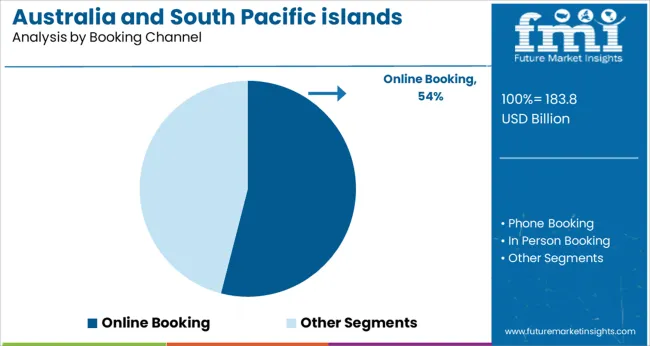
Online booking is expected to hold 54.0% of the total share in the tourism market by 2025, establishing it as the dominant booking channel. This shift is being driven by the widespread digitization of travel services, enhanced user accessibility, and consumer preference for self-service travel planning. The proliferation of mobile applications, meta-search engines, and integrated travel platforms has enabled real-time booking, personalized offers, and frictionless payment options.
Online travel agencies (OTAs), direct hotel portals, and experience-booking websites have emerged as preferred touchpoints, especially among younger travelers and tech-savvy segments. Enhanced cybersecurity measures, flexible cancellation policies, and AI-powered itinerary planners have further strengthened trust and convenience in the online ecosystem.
The growing integration of virtual tours, user reviews, and influencer-driven content is reinforcing digital engagement and driving conversion through online channels across the region.
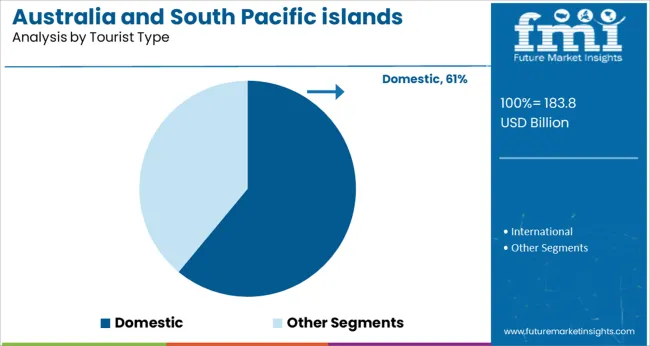
Domestic tourism is projected to contribute 61.0% of the total market share in 2025, making it the leading tourist type segment across Australia and the South Pacific islands. This dominance is being shaped by increased intra-regional travel, government-supported travel stimulus programs, and consumer preference for accessible, short-haul destinations. Pandemic-era restrictions catalyzed a resurgence in local exploration, a trend that has persisted due to rising travel costs and awareness of regional tourism gems.
Infrastructure development, promotion of “staycations,” and regional cultural events have played pivotal roles in sustaining domestic tourist volumes. Additionally, the rise in road trips, eco-retreats, and rural tourism experiences has diversified travel patterns within the domestic market.
With continued focus on regional economic revitalization and traveler safety, the domestic segment is expected to maintain its leadership position and further drive inclusive tourism growth.
The Australia and South Pacific islands are part of Oceania and are among the most visited and active-tourist regions. Australia and South Pacific islands have a diversity to explore for tourists. From Fiji Islands to beaches, there are lots of destinations to explore in Australia and the South Pacific islands. The culture, nature, and food trends of these regions are key factors that attract tourists.
The inhabitants are dependent on tourism for their employment. The spending of tourists on different factors like travel, food, accommodation, local retail trades, etc. helps in generating revenue. The travelling agencies and tour services share a good portion of such expenditure.
Domestic tourists are tending to travel to the regional area, and the reasons for travelling are usually holidays and personal work, followed by visits to relatives and friends and business tours.
The expenditure by international tourists is higher than the domestic Overseas travellers tend to visit popular places and spend mainly on lodging and food, followed by travelling and retail trades. Due to the response from overseas tourists, the hotels and restaurants in the capital cities of these regions are gaining revenue.
Tourism is the most important part of the economic growth of the Pacific island countries. The Pacific islands are rich in natural and cultural heritage. Tourists from around the world are exacting for such an experience, and are willing to spend a good amount of money. Tourism may be the way forward for Pacific countries to improve the economy and opportunities for job and infrastructure development.
The major factors may include: development in airlines and carriers, development in local lodging and hotel brands and restaurants, tourism packages for tourists, help them have a specific experience during their stay. Increasing demand in Pacific Cruises, etc. Tourism policies and their implementation vary from country to country. So modification and using different strategies might help in utilizing tourism as a growth driver.
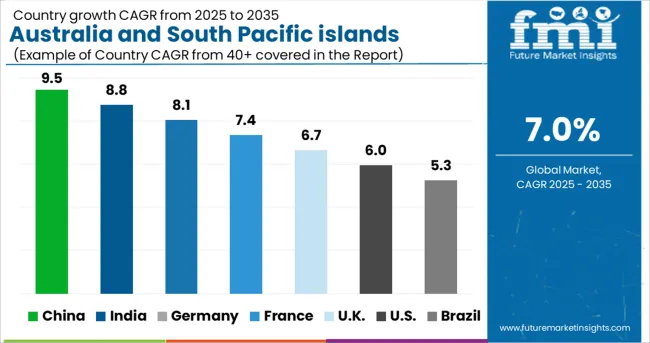
Regional organisations ready to support the development of tourism in Oceania
The South Pacific Tourism Organisation (SPTO) is an inter-government body, which deals with the tourism sector in South Pacific. The main agenda for SPTO is to market and develop the tourism in South Pacific.
It also organises the South Pacific Tourism Exchange (SPTE), which is the largest travel and tourism-based Business to Business event in the region, helping to get the regional tourism operators and International tour operators, which might be the potential buyers. The SPTE Schedules and arranges meetings and appointments for such organisations to promote regional tourism.
2020 was the year of tourism for the Pacific Island countries of China. From November 2020 to January 2024, a cruise ship carrying more than 2,300 Chinese tourists left Tianjin and anchored in 10 of her PICs and regions, including PNG, Vanuatu and Tonga.
Since 2005, China has annually provided the Pacific Tourism Organization (PTO) with a free booth at the China International Travel Mart, invited the heads of tourism departments of PTO member countries to the event, and promoted PIC tourism resources.
China has been a strong supporter of PIC. More and more PICs have been added as tour destinations by Chinese tourism companies. So far, nine of the PICs with diplomatic ties to China, excluding Niue, have been destinations for outbound Chinese tourist groups. There are also cultural exchanges between PRC and PICs, making their relations even stronger.
Launch of new campaigns expected to attract more travellers in Australia
Tourism Australia is a Government Agency, which attracts international tourists to Australia. Tourist activities have both prospects, for leisure and for promoting business activities. The organisation organises activities related to marketing of regional businesses related to tourism and advertising, trade shows and media programmes.
They also continuously search for new markets by analysing consumer behaviour through research and online communications. These activities help in taking the right steps towards the development of tourism in Australia. In the Pacific, the New Zealand government-funded development of the Port Vila waterfront has created an attractive environment for cruises.
There are also plans for a waterfront development in Apia, Samoa. These include other development partners to build new port infrastructure in Luganville, Vanuatu, where the Government of the People's Republic of China funded the construction of a new wharf and cruise terminal, and Port Vila, Vanuatu, funded by the Government of Japan. It complements the major initiatives it supports.
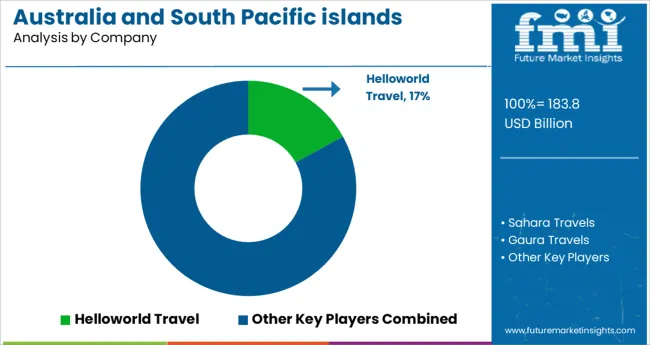
The leading players of South Pacific tourism are available globally and are offering a number of packages of tours including famous tourist attractions and destinations. These tour companies are giving travelers multiple options to explore the South Pacific destinations. The packages include cruises, safaris, city and jungle cruises, and mountain hikes.
For instance:
| Attribute | Details |
|---|---|
| Forecast Period | 2025 to 2035 |
| Historical Data Available for | 2020 to 2024 |
| Market Analysis | USD Million for Value |
| Key Region Covered | Oceania |
| Key Countries Covered | Australia, New Zealand, Fiji, Papua New Guinea, Tuvalu, and Vanuatu. |
| Key Segments Covered | Tourism Type, Booking Channel, Tourist Type, Tour Type |
| Key Companies Profiled | Helloworld Travel; Sahara Travels; Gaura Travel; Adventure Tours Australia; Audley Travel; Australia Health Tourism; Australian Sports Tours; Cox and Kings; Adventure-Life; Kesari Tours; Mango Tours India; Trafalgar |
| Report Coverage | Market Forecast, Company Share Analysis, Competition Intelligence, Drivers, Restraints, Opportunities and Threats Analysis, Market Dynamics and Challenges, and Strategic Growth Initiatives |
| Customization & Pricing | Available upon Request |
The global australia and south pacific islands tourism market is estimated to be valued at USD 183.8 USD billion in 2025.
It is projected to reach USD 361.5 USD billion by 2035.
The market is expected to grow at a 7.0% CAGR between 2025 and 2035.
The key product types are cultural & heritage tourism, medical tourism, eco/sustainable tourism, sports tourism and wellness tourism.
online booking segment is expected to dominate with a 54.0% industry share in 2025.






Full Research Suite comprises of:
Market outlook & trends analysis
Interviews & case studies
Strategic recommendations
Vendor profiles & capabilities analysis
5-year forecasts
8 regions and 60+ country-level data splits
Market segment data splits
12 months of continuous data updates
DELIVERED AS:
PDF EXCEL ONLINE
Australia Pallet Wraps Market Size and Share Forecast Outlook 2025 to 2035
Australia Legal Cannabis Market - Size, Share, and Forecast 2025 to 2035
Australia Probiotic Supplements Market Trends – Growth, Demand & Forecast 2025–2035
Australia Chickpea Protein Market Outlook – Demand, Trends & Forecast 2025–2035
Australia Non-Dairy Creamer Market Outlook – Size, Demand & Forecast 2025–2035
Australia Chitin Market Analysis – Growth, Size & Forecast 2025–2035
Australia Bubble Tea Market Trends – Size, Share & Forecast 2025–2035
Australia Bakery Mixes Market Insights – Growth, Demand & Forecast 2025–2035
Australia Non-Alcoholic Malt Beverages Market Insights - Trends & Forecast 2025 to 2035
Australia Food Testing Services Market Growth – Trends, Demand & Innovations 2025–2035
Australia Food Emulsifier Market Insights – Demand, Size & Industry Trends 2025–2035
Australia Pulses Market Report – Trends, Demand & Industry Forecast 2025–2035
Australia Probiotic Strains Market Growth – Trends, Demand & Innovations 2025–2035
Australia Frozen Ready Meals Market Insights – Demand, Size & Industry Trends 2025–2035
Australia Yerba Mate Market Growth – Trends, Demand & Innovations 2025–2035
Australia Sweetener Market Analysis – Size, Share & Forecast 2025–2035
Australia Food Service Equipment Market Insights – Demand, Size & Industry Trends 2025–2035
Australia Yeast Extract Market Insights – Demand, Size & Industry Trends 2025–2035
Australia Canned Tuna Market Insights – Demand, Size & Industry Trends 2025–2035
Australia Calf Milk Replacer Market Outlook – Share, Growth & Forecast 2025–2035

Thank you!
You will receive an email from our Business Development Manager. Please be sure to check your SPAM/JUNK folder too.
Chat With
MaRIA